
Mountaineering
BeginnerHiking
BeginnerRock Climbing
BeginnerIce Climbing
BeginnerBackcountry Skiing
BeginnerMountain Planet
12 years, Australia
HOW TO TRAIN FOR HIGH-ALTITUDE CLIMBS
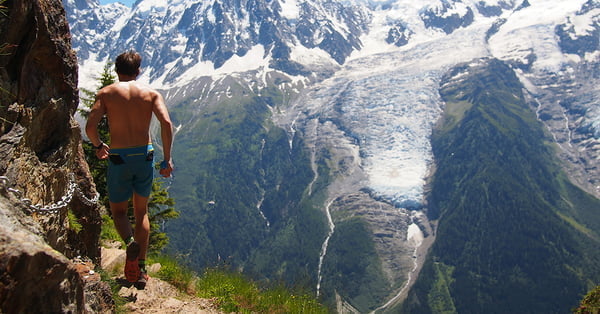
Recent medical research suggests that climbers should avoid any workouts for the lactate threshold and endurance at least 3-4 weeks before high-altitude climbing, by replacing them with training for power and strength. Learn if it’s true, and also discover the secrets and advices from well-known athletes and mountain guides.
The Mountain Planet project conducted a survey among their registered members, and found out what methods and training they use during the preparatory period before their high-altitude ascents. Mountain Planet is a geo-informational social network for the Alpine Community which provides information on over 100,000 mountains and route conditions. Join the online Alpine Community now and help us make mountains safer and more accessible for people.
AUTHOR: MAXUT ZHUMAYEV (here is Maxut’s climbing resume)
- High altitude experience: The 26 person to climb all 14 eight-thousanders (completed this feat on 23 August 2011) and the 12 person to accomplish this feat without the aid of supplemental oxygen.
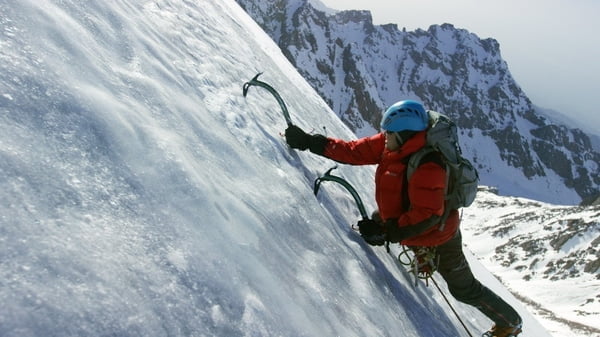 Photo cortesy of Maxut Zhumayev
Photo cortesy of Maxut Zhumayev
This is how my training looks like during the week:
- Monday - rest day;
- Tuesday - 1 hour 10 km evening run for 1 hour (with intervals or running uphill), 30 minutes of football, 1 hour climbing wall warm-up (speed and distance climbing);
- Wednesday is a 3-hour day training on the rocks;
- Thursday - 1 hour 10 km evening run for 1 hour (with intervals or running uphill), 30 minutes of football, 1 hour climbing wall warm-up (speed and distance climbing);
- Friday - evening climbing and spending the night at 2500 m altitude;
- Saturday - 2500-3000 m altitude rock climbing;
- Sunday consists in 4000-4500 m high-speed ascent to the summit.
AUTHOR: ISRAFIL ASHURLY (here is Israfil’s climbing resume)
- High altitude experience: 12 years;
- The only Azerbaijani in history to climb all 7 Summits, including Mt Everest;
- Snow Leopard (all 7000ers of former USSR).
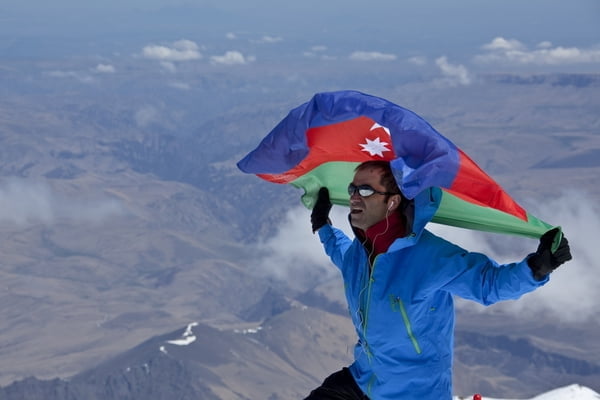 Photo cortesy of Israfil Ashurly
Photo cortesy of Israfil Ashurly
Before the climbing season starts I also add bike riding to my training, and in the winter, I never skip cross-country skiing.
If we continue to talk about hypoxic training, then before the expedition to Mount Everest, I joined the experimental laboratory in Moscow for 2 months, where I trained breathing with a special low oxygen mixture. By the end of this two-month course, I was able to increase the delay time of my breath from one and a half minutes to six, although this effect lasted for a relatively short time.
Since the beginning of this year, I have added to my training schedule before high altitude climbing 10 km fast pace walking. I do these exercises 5-6 times a week.
AUTHOR: JOSE CALLISAYA (here is Jose's climbing resume)
- High-altitude experience: 25 years;
- Mountain guide UIAGM/IFMGA;
- Leader of the first Bolivian expedition to Mount K2.
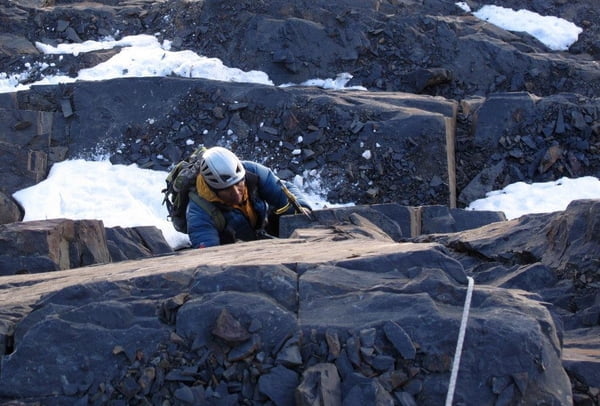 Photo cortesy of Alexander Von Ungern
Photo cortesy of Alexander Von Ungern
Your body will feel the sudden pressure change as to the absorption of oxygen, which is why we must obtain a good physical preparation, psychological and a good adaptation to the altitude in order to achieve our goals and reach the summits.
Regarding physical preparation, a good and excellent training is required. Exercises such as running, helps achieve a good preparation in the legs in order to withstand long days, where we will put the maximum resistance to exhaustion. Having strong legs will help a lot in case we have to make an effort such as returning from the summit after hours of climbing. Also, preparing by carrying a backpack on gradients will help improve our training.
One of the most important climbing phases is to achieve a good altitude adaptation. This can be achieved by first reaching low summits, where we can feel that our body adapts to that altitude. There could also be a gradual adaptation, by climbing a high base but by descending to the base camp to sleep. Then go back to the high base and stay there to sleep, and then face the summit. By this way, the ascent is a process of adaptation to reach the goal.
Psychological preparation is also important, especially at the moment of reaching a summit. Even to the last 100 or 200 meters of reaching the summit you feel that you have no more energy and at that time your previous mental preparation and resistance will help a lot. Mental preparation is also a gradual process, in which you get to know your strengths and your limits, as well as what is related to altitude adaptation.
To sum up, the preparation for the ascent to a mountain and subsequent descent to the base camp in the best conditions, consists of: 20% of physical preparation, 20% of adaptation to altitude and 60% of psychological preparation.
AUTHOR: DMITRY SIDOROV (here is Dmitry's climbing resume)
- High-altitude experience: 25 years;
- LENSA-certified mountain guide;
- 5 climbs above 7000 meters, including Ismoil Somoni Peak (7495 meters).
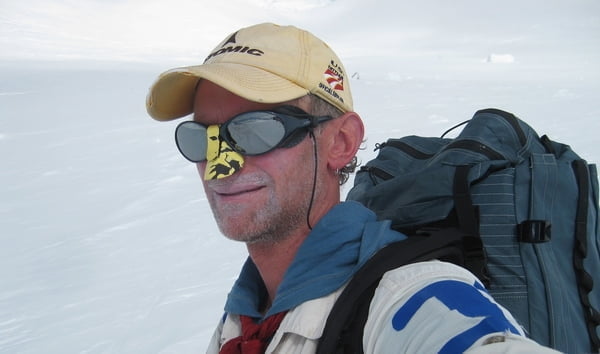 Photo cortesy of Dmitry Sidorov
Photo cortesy of Dmitry Sidorov
I suggest taking systematic approach and taking no chances. High-altitude climbing is very demanding and dangerous and may cost you your toes/fingers and even your live.
Let's start with mental aspect. Get a couple of classic books about early HAC and see if you can get inspired and aroused by those accounts. When I was 10 I read 'Annapurna' (first 8000-meter peak ascended in 1951) by Morris Herzog and 'Nanga Parbat Pilgrimage' by Hermann Buhl. The books set my life trajectory - I have been working in the mountains for over 35 years. Goal here is to get driven that you will persevere through a lot (I say A LOT!!!) of suffering you are about to inflict on yourself and your loved ones.
My personal favorites
- K2: The Price of Conquest by Lacadelli and Cenacchi
- The Crystal Horizon: Everest – The First Solo Ascent by Reinhold Messner
- almost anything by Chris Bonington and Walter Bonatti
I hope you become passionate about all this and that passion will lead you to success in your high-altitde climbing quest.
Theory. Get a few books on basics human physiology and endurance and HA training and thumb through. Read what is catching your eye or feeding your imagination. Get an idea of what physiological limits you will be pushing (e.g. hypoxia) and how to become good at suffering.
I find these resources useful:
- - https://www.youtube.com/watch?v=jvatjx4ag4w
- - https://www.youtube.com/watch?v=Fr07eN58FhQ
- - Serious Training for Endurance Athletes, by Ray Browning and Rob Sleamaker
- - https://www.alpineascents.com/climbs/denali/training/#screening
Practical skills. Well, it helps if you are already a seasoned climber/mountaineer. If so, then high-altitude climbing is just a matter of doing the same/similar things at HA with only about half of oxygen.
If not, hmmmm.... Are you sure you want to be high-altitude climber? Why not to just start climbing and see how that goes? Still not convinced?
There is yet another approach. Instead of learning how to play musical instrument and how to sing settle for karaoke. Quickly forget what I just blah-blah-blabbed about, un-learn and get un-inspired and instead sign for a guided expedition. Whatever you decide take charge of your life or others will and good luck.
HOW ABOUT THE SCIENCE...
Biochemistry studies show that the body destroys drastically the muscle tissue, by reducing the oxygen resources consumption. By this way, it turns out that the most effective way to prepare for high-altitude climbing is to have strong muscles storing a lot of glycogen and to cancel any workouts for the lactate threshold and endurance at least 3-4 weeks before climbing so that the number of mitochondria in the cells starts to decrease long before the climber gets into conditions of serious oxygen deficiency. More details can be found below.
The most effective resistance training consists in cyclic exercise on the lactate threshold. In other words, these training data make the athlete's body learn how to use oxygen as efficiently as possible, and use other resources minimally. Since the most effective method of extracting energy from oxygen is due to mitochondria in our cells, the body begins to generate more and more mitochondria for energy production.
Another method of energy production is the storage and use of glycogen (sugar) in the liver and muscles. This is achieved through strength training. The stronger and bigger muscles are, the more sugar it can store. Stocks of sugar in the liver are quite limited and not as large as in strong muscles. By getting into serious oxygen deficiency conditions, the climber's organism first of all seeks to use sugar, accumulated in muscles, and not to extract energy from oxygen, which is already small. In this regard, the body reduces dramatically the number of mitochondria in our cells so that they do not burn precious oxygen, and do not switch the body to consume even more of it. The more mitochondria there is, the more oxygen is used. The approximate timeframe for the creation or destruction of mitochondria is 2-3 weeks. From this it follows that a mountaineer must lift all endurance training (at least for 3 weeks) before high-altitude climbing (more than 7,000 meters) especially those that occur on the high lactate threshold and stimulate the creation of new mitochondria.
Ideally, because the body uses more sugar than oxygen, the body should have large storages of sugar and a mechanism for its processing (muscle contraction) and few mechanisms that use oxygen to produce energy (the work of the muscles for endurance and mitochondria). The body can't accumulate sugar in the muscles if it does not have the habit of using this sugar to work the muscles. That is, if there is no strength training, then there will not be strong or bulk muscles in which sugar (glycogen) could be accumulated and stored.
It is very important to remember that training the body for resistance and strength are two completely different goals. A person can't train for two of these purposes at the same time. If the athlete begins to train for resistance, the body destroys unnecessary energy consumers (muscles), reduces their strength and moves to the most effective use of energy, a lot of oxygen and few calories for the same actions. If an athlete trains the muscles force, the body reduces the number of mitochondria, because muscle strength does not work on oxygen, but uses sugar. This is why it's called anaerobic load. The body experiences a similar effort on altitude with lack of oxygen. In this case, with significant reductions in the mitochondria, the body switches the energy consumption regime to the consumption of sugar from the muscles and, accordingly, its storage.
In the preparatory period (for example, during the off-season) resistance training is still required (and on the lactate threshold too), just to teach the mitochondria how to use oxygen as efficiently as possible. It means, even a small number of mitochondria, which will remain, must "be able" to use a small amount of oxygen very effectively. But these trainings should be stopped 3-4 weeks before climbing and switched on strength training. This training method is called training periodization for the high altitude.
AUTHOR: SERGEY KOFANOV (here is Sergey's climbing resume)
- High-altitude experience: 20 years;
- Two times Mount Everest summiter;
- Holds the leading alpine awards - the American "Golden Piton" and the European "Grolla d`Or" received for the best ascent of 2007 (Jannu, 7710 m, Himalaya).
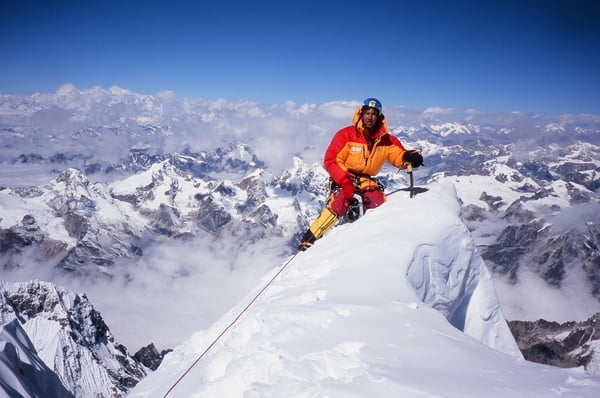 Photo cortesy of Sergey Kofanov
Photo cortesy of Sergey Kofanov
As for me, in my preparatory training process before high-altitude climbs, I stick to proven ways that work precisely and never let me down. I don't want to introduce something new, because high altitude is not a place where you can check some novelties in the training process, because a mistake can take my life. I prefer endurance training, but about 1-2 weeks before going to the mountains I reduce their intensity to almost zero.
The following sources were used while preparing this article:
- http://journals.plos.org/plosone/article?id=10.1371/journal.pone.0010681#
- https://www.ncbi.nlm.nih.gov/pmc/articles/PMC4338748/
- http://onlinelibrary.wiley.com/doi/10.1113/expphysiol.2012.066092/full
- https://academic.oup.com/bja/article/114/4/677/281839/Systemic-oxygen-extraction-during-exercise-at-high
- http://jeb.biologists.org/content/214/15/2455





